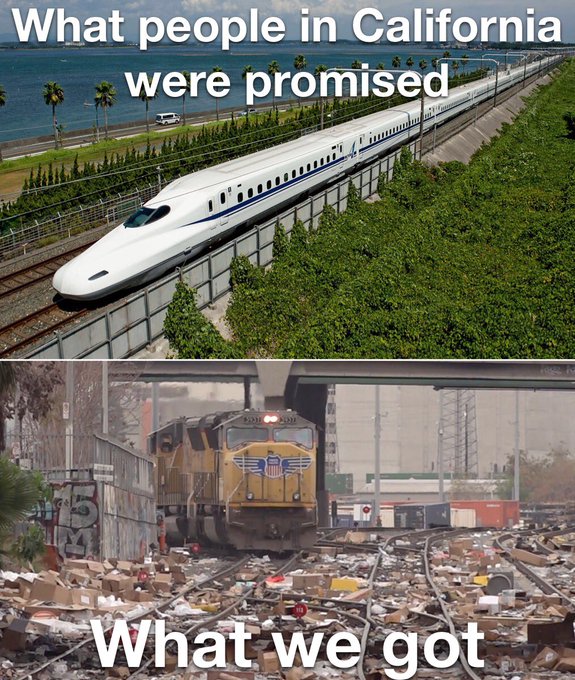The Age of Abundance is upon us. Old paradigms go.
— Paramendra Kumar Bhagat (@paramendra) July 4, 2022
Is Google a digital version of your local library? No. It is abundance.
— Paramendra Kumar Bhagat (@paramendra) July 4, 2022
I was at the highland park parade. I was in the direct line of fire. I’m ok as is my family but I’m done with thoughts and prayers
— Sara (@MissSara729) July 4, 2022
So, if the Highland Park shooter is still "at large" after killing six people and police are still looking for him.
— Gurbaksh Singh Chahal (@gchahal) July 4, 2022
Is it really the solution to arm teachers and expect them to produce better results?
Spending this fourth sheltering in place…again. This year for a different horrifying reason.
— startupstella 🇺🇦 (@startupstella) July 4, 2022
Police have told us to remain inside locked doors while an active shooter is on the loose.
Debating whether we can grill hamburgers on our patio safely
This is America.
— Kelly 8️⃣✨#Florida✨ (@LeValleyKelly) July 4, 2022
Elvis is just Elvish without an h
— Elon Musk (@elonmusk) July 4, 2022
Happy 4th of July 🇺🇸 pic.twitter.com/RVvoL42vI4
— Hadley (@Hadley) July 4, 2022
It can be hard to unplug as a startup founder but it’s absolutely required.
— Andrew Gazdecki (@agazdecki) July 4, 2022
Please take care of yourself by investing in your personal health (mental & physical) and personal relationships.
Remember half the game is mental and it’s a long marathon not a short race.
Starting the 4th as our founding fathers intended, with a Diet Dr. Pepper and chest day
— Samuel Spitz (@samuel_spitz) July 4, 2022
JUST IN: Sources confirm that at least 2 of today's 6 fatalities in the Highland Park, 4th of July Parade shooting were of Jewish origin. pic.twitter.com/O3kwPWiHYO
— BNN Newsroom (@BNNBreaking) July 4, 2022
— Elon Musk (@elonmusk) July 4, 2022
NFTs, crypto, web3.
— Binance (@binance) July 4, 2022
3 things I think about 24/7.
The best way to kill passion and productivity is, micro-management, in an office, office hours, etc.
— CZ 🔶 Binance (@cz_binance) July 4, 2022
That is so... last century. https://t.co/9D3Wuznuqb
I need to stop asking girls ‘is that your dad’ in St Tropez 💀
— Lucy Guo (Hiring Engineers & Designers) (@lucy_guo) July 4, 2022
the opportunities in WEB3 are so so immense.
— champ 💫 (@champtgram) July 4, 2022
i'm so happy to live in a time when we can change our lives from our bedrooms.
— Misha (@MishaDaVinci) July 4, 2022
We judge others by their behavior while we judge ourselves by our intentions - Anon
— Kunal Shah (@kunalb11) July 4, 2022
Ages of Founding Fathers in 1776:
— Jon Miltimore (@miltimore79) July 4, 2022
James Monroe, 18
Aaron Burr, 20
John Marshall, 20
Alexander Hamilton, 21
James Madison, 25
Benjamin Rush, 30
John Jay, 30
Thomas Jefferson, 33
Thomas Paine: 39
Trailblazer, indeed. https://t.co/qKKWNzmOiy
— Paramendra Kumar Bhagat (@paramendra) July 4, 2022
The youngest self-made billionaire woman in the U.S. didn’t grow up in a Manhattan high rise or the Hollywood Hills. Instead, Rihanna amassed her fortune from her own music and entrepreneurial ventures. https://t.co/B6e3mXOihe pic.twitter.com/ckOnpIHfx0
— CNBC Make It (@CNBCMakeIt) July 4, 2022
Rihanna is now worth $1.4 billion–making her America’s youngest self-made billionaire woman (via @CNBCMakeIt) https://t.co/VNPVgYjJXh
— CNBC (@CNBC) July 4, 2022
I'm seeing people try and say Highland Park is typical "Chicago".
— Pugs Moran: Live 12pm/9pm (cst) PugsCast.com (@pugsandco) July 4, 2022
Highland Park Illinois is where Michael Jordan lived.
It's where 16 Candles, Home Alone, Risky Business, and Ferris Bueller were filmed.
This is not "Chicago".
It's one of the wealthiest towns in America
.@balajis “bookapp” concept is a glimpse into the future of internet-native books.https://t.co/S7cEOBw0KB pic.twitter.com/XmB1BzbXy3
— Dan Romero (@dwr) July 4, 2022
BREAKING: Former Highland Park Mayoral Candidate Robert Primo II is the father of today's 4th of July Parade shooter, Robert "Bobby" E. Crimo III. pic.twitter.com/lo5nRgBtDr
— BNN Newsroom (@BNNBreaking) July 4, 2022
💥ARGENTINA: Inflation over 60% pic.twitter.com/2RemeNEbcE
— Bitcoin Archive 🗄🚀🌔 (@BTC_Archive) July 4, 2022
1/ Check out #ICP Blue Sky Track Winners!
— DFINITY (@dfinity) July 4, 2022
🥇 @kinic_app is a dedicated Web3 search engine running entirely on-chain — making it easy to discover true Web3 dapps and content.
💻 Try it: https://t.co/RvAkiiOa1s
Learn more 👇https://t.co/LzNGAe3C9x
Do you want a Web 3.0 email that works with regular email, but more secure 👇@Dmailofficial is the answer! 🚀 pic.twitter.com/Co50xD4xdf
— Dfinity Community ∞ (@ICPSquad) July 3, 2022
#HereWeGoAgain pic.twitter.com/aIc0n0bB2V
— Gurbaksh Singh Chahal (@gchahal) July 4, 2022
Find him please…
— Jason Weingarten (@jasonweingarten) July 4, 2022
SUSPECT: Robert "Bobby" E. Crimo III, 22
Driving a 2010 Silver Honda Fit
LICENSE PLATE: IL DM80653
This is an impersonator who is using my name to scam people for thousands of dollars.
— Misha (@MishaDaVinci) July 4, 2022
They've blocked me. I got this pic from a follower in Brazil.
Please note and report to Twitter.
Thanks so much! pic.twitter.com/qCLiqd8RGb
Happy July 4th! pic.twitter.com/KYN2XO712Z
— Elon Musk (@elonmusk) July 4, 2022
Would love to see algorithms help prevent tragedies like today.
— Jason Weingarten (@jasonweingarten) July 4, 2022
SUSPECT: Robert "Bobby" E. Crimo III, 22
Driving a 2010 Silver Honda Fit
LICENSE PLATE: IL DM80653
Will delete this tweet once he is captured. pic.twitter.com/kXT9rTHSiW
Apparently, this exploit happened because the gov developer wrote a tech blog on CSDN and accidentally included the credentials.
— CZ 🔶 Binance (@cz_binance) July 4, 2022
1 billion records of private citizens' data. 😭 https://t.co/vPISm534Tn pic.twitter.com/FpMCGrpx08
For the record. pic.twitter.com/bjRpTuJHHj
— Radek Sikorski MEP (@radeksikorski) July 4, 2022
A longevity diet that hacks cell ageing could add years to your life A new diet based on research into the body's ageing process suggests you can increase your life expectancy by up to 20 years by changing what, when and how much you eat ......... I HAVE seen my future and it is full of beans, both literally and metaphorically. As well as upping my bean count, there will be a lot of vegetables, no meat, long periods of hunger and hardly any alcohol. But in return for this dietary discipline, my future will also be significantly longer and sprightlier. I am 52 and, on my current diet, can expect to live another 29 years. But if I change now, I could gain an extra decade and live in good health into my 90s. .
Russia’s army is in a woeful state The fiasco in Ukraine could be a reflection of a bad strategy or a poor fighting force ........ “It’s not a professional army out there,” said Admiral Foggo. “It looks like a bunch of undisciplined rabble.” Since they invaded Ukraine on February 24th, Russian forces have succeeded in capturing just one big city, Kherson, along with the ruins of Mariupol and chunks of Donbas, the eastern industrial region that they partially occupied in 2014 and now hope to conquer in its entirety. That meagre haul has come at the cost of 15,000 dead Russian soldiers, according to a recent British estimate, exceeding in two months the Soviet losses in a decade of war in Afghanistan. The invasion has clearly been a fiasco, but how accurate a reflection of Russia’s military capabilities is it, astonished Western generals wonder? ....... The belief was that Russia would do to Ukraine what America had done to Iraq in 1991: shock and awe it into submission in a swift, decisive campaign. ....... Russian military expenditure, when measured properly—that is, in exchange rates adjusted for purchasing power—almost doubled between 2008 and 2021, rising to over $250bn, about triple the level of Britain or France ........... The charitable interpretation is that the Russian army has been hobbled in Ukraine less by its own deficiencies than by Mr Putin’s delusions. His insistence on plotting the war in secrecy complicated military planning. The fsb, a successor to the kgb, told him that Ukraine was riddled with Russian agents and would quickly fold. That probably spurred the foolish decision to start the war by sending lightly armed paratroopers to seize an airport on the outskirts of Kyiv and lone columns of armour to advance into the city of Kharkiv, causing heavy casualties to elite units. ......... Yet, this coup de main having fizzled, the army then chose to plough into the second largest country in Europe from several directions, splitting 120 or so battalion tactical groups (btgs) into lots of ineffective and isolated forces. Bad tactics then compounded bad strategy: armour, infantry and artillery fought their own disconnected campaigns. Tanks that should have been protected by infantry on foot instead roamed alone, only to be picked off in Ukrainian ambushes. Artillery, the mainstay of the Russian army since tsarist times, though directed with ferocity at cities such as Kharkiv and Mariupol, could not break through Ukrainian lines around Kyiv......... America has been wielding the scalpel nearly continuously since the end of the cold war, in Iraq, the Balkans, Afghanistan, Libya, Syria and so on. Russia has not fought a war of this magnitude against an organised army since seizing Manchuria from Japan in 1945. ........ things that appeared easy in America’s wars, such as wiping out an enemy’s air defences, are actually quite hard. Russia’s air force is flying several hundred sorties a day, but it is still struggling to track and hit moving targets, and remains heavily reliant on unguided or “dumb” bombs that can be dropped accurately only at low altitudes, exposing its planes to anti-aircraft fire. ........ On April 27th another official said that Russian forces in Donbas appeared unwilling, or unable, to advance in heavy rain. ....... In part, Russia’s woes are down to Ukraine’s heroic resistance, buoyed by a torrent of Western weaponry and intelligence. “But just as much credit for the shattering of Russian illusions lies in a phenomenon long known to military sociologists,” writes Eliot Cohen of Johns Hopkins University, “that
armies, by and large, reflect the qualities of the societies from which they emerge.” Russia’s state, says Mr Cohen, “rests on corruption, lies, lawlessness and coercion”. Each one has been laid bare by Russia’s army in this war.
........... “They put a lot of money into modernisation,” says General Pavel. “But a lot of this money was lost in the process.” Corruption surely helps explain why Russian vehicles were equipped with cheap Chinese tyres, and thus found themselves stuck in the Ukrainian mud. It may also explain why so many Russian units found themselves without encrypted radios and were forced to rely on insecure civilian substitutes or even Ukrainian mobile phone networks. That, in turn, may well have contributed to the war’s toll on Russian generals (Ukraine claims to have killed ten of them), since their communications at the front line would have been easier to intercept. ......... Yet corruption cannot be the whole story. Ukraine is also corrupt, and not much less so than Russia: they sit respectively in 122nd and 136th position on the Corruption Perceptions Index published by Transparency International, a pressure group. What really distinguishes the two is fighting spirit. Ukrainian soldiers are battling for the survival of their country. Many Russian ones did not even know they were going to war until they were ordered over the border. ........ Ill-trained and poorly motivated soldiers are a liability in any conflict; they are especially unsuited to the complexities of modern combined-arms warfare, which requires tanks, infantry, artillery and air power to work in synchrony. To attempt such daunting co-ordination in Ukraine with sullen teenagers, press-ganged into service, fed expired rations and equipped with badly maintained vehicles was the height of optimism. ............ Staff training is rigid and outdated, he says, obsessed with the second world war and with little attention paid to newer conflicts. That may explain why doctrine was thrown out of the window. Manoeuvres that seemed easy at Vostok and other stage-managed exercises proved harder to reproduce under fire and far from home. .......... To the extent that Russian officers have studied their military history, they appear to have imbibed the worst lessons of the Afghan, Chechen and Syrian wars. During their occupation of northern Ukraine, Russian soldiers not only drank heavily and looted homes and shops, but murdered large numbers of civilians. Some have been rewarded for it. On April 18th the 64th Motorised Infantry Brigade, accused of massacring civilians in Bucha, was decorated by Mr Putin for its “mass heroism and courage” and accorded the honour of becoming a “Guards” unit. ........... In theory, a war-averting peace deal would reflect the relative power of the two potential belligerents. But the two sides can fail to reach such a bargain because that relative power is not always obvious. ........... That helps explain why Russia so wildly inflated its supposed prowess in the Vostok exercises. And it can work. “I suspect many of us were taken in by Victory Day parades that showed us all of the smart bits of kit,” says the European general. .......... A Russian army that prevails in a war of attrition through sheer firepower and mass would still be a far cry from the nimble, high-tech force advertised over the past decade. More likely is that Russia’s plodding forces will exhaust themselves long before they achieve their objectives in southern and eastern Ukraine, let alone before mounting another attempt on Kyiv. The world’s military planners will be watching not just how far Russia gets in the weeks ahead, but also what that says about its forces’ resilience, adaptability and leadership. Like a knife pushed into old wood, the progress of the campaign will reveal how deep the rot runs.Are we ready for a discussion on anti-semitism?
— Jason Weingarten (@jasonweingarten) July 4, 2022
Based on the visuals I've seen, that has to be the nicest police takedown of a domestic terrorist I've ever seen.
— Gurbaksh Singh Chahal (@gchahal) July 5, 2022
I’m really, really angry. pic.twitter.com/E0MCTMSMiC
— startupstella 🇺🇦 (@startupstella) July 5, 2022
I ran from a mass shooting today with my two little girls in my arms. We got separated from my wife. We hid behind a car and then sheltered in the apartment of some good Samaritans for 5 hours watching swat teams from the windows. We are all ok but we’re angry, very very angry.
— Hunter Stuart at RSAC this week (@Hoont) July 4, 2022
#Guns Are Like #Cigarettes: They Kill https://t.co/2IT0pXUKRx #guncontrol #secondamendment #unitedstates #gunviolence #nra #NFTProject #NFTs #NFT
— Paramendra Kumar Bhagat (@paramendra) July 5, 2022
Based on the visuals I've seen, that has to be the nicest police takedown of a domestic terrorist I've ever seen.
— Gurbaksh Singh Chahal (@gchahal) July 5, 2022
— Gurbaksh Singh Chahal (@gchahal) July 5, 2022
#Guns Are Like #Cigarettes: They Kill https://t.co/2IT0pXUKRx #guncontrol #secondamendment #unitedstates #gunviolence #nra #NFTProject #NFTs #NFT
— Paramendra Kumar Bhagat (@paramendra) July 5, 2022
1 startup hack? Marriage. I met my wife when she was a MUA w/ a small studio. She was short on rent and asked if I had $ (I didn't). I took out a small loan to pay her rent & said I was going to build her biz 1st, then mine after she's successful. She's now made over $1.4M sales
— Tye Calloway (@blklaunch) July 4, 2022
This is my dad, Gerald. He turns 104 on 12 July. Any chance I can muster 104 happy birthdays from Twitter? He'll be amazed and baffled in equal measure. pic.twitter.com/0dv65FQ9Yk
— Kevin Mills (@bravenewmalden) July 4, 2022
productivity hack, if you work 9-5s in australia you’re actually working nights and weekends in the US
— david phelps (🐮,🐮)(🃏,🃏) (@divine_economy) July 5, 2022
America is the greatest country in the world and the sheer luck of being born here is something I will never take for granted. But today I’m inside with the doors locked because 6 people were murdered in a mass shooting 10 minutes from my house.
— Brett Harrison (@Brett_FTX) July 4, 2022
Happy Birthday Mav @TomCruise from Ice !
— Val Kilmer (@valkilmer) July 4, 2022
bitcoin stans really get on here and say that bitcoin is 'focused on solving the money problem' when that problem solving focus is just not shipping anything meaningful for 12 years
— alephv.eth (@alpeh_v) July 4, 2022
i've been hugely focused on my physique for the last 12 years by refusing to go to the gym
I can’t be the only one listening to the Fourth of July fireworks tonight and hearing only gunfire.
— Dan Barry (@DanBarryNYT) July 5, 2022
There's no place I'd rather be than right here in Orange County to celebrate the 4th! There's so much early American history right under our feet -- including here in Cornwall. Happy Independence Day! pic.twitter.com/HImapxBFFr
— James Skoufis (@JamesSkoufis) July 4, 2022
Honestly, I can’t believe this happened in my backyard. You aren’t even safe in a quiet nice suburb. My heart goes out to the families of Highland Park, IL. My former sister in law and nephews live there. This is insane.
— Renata Merino 👠👠👠 (@RMB2) July 4, 2022







